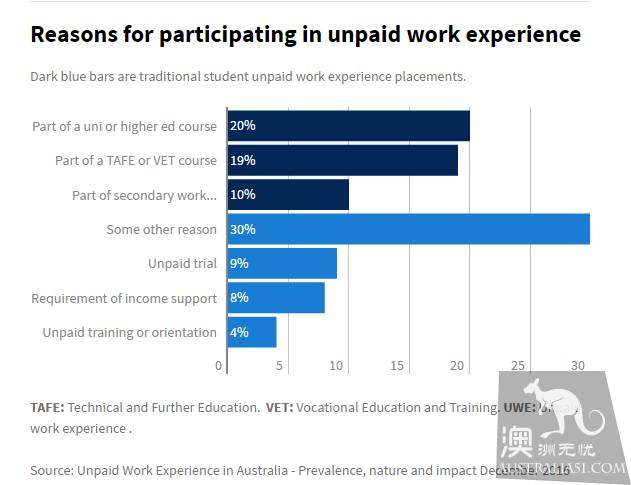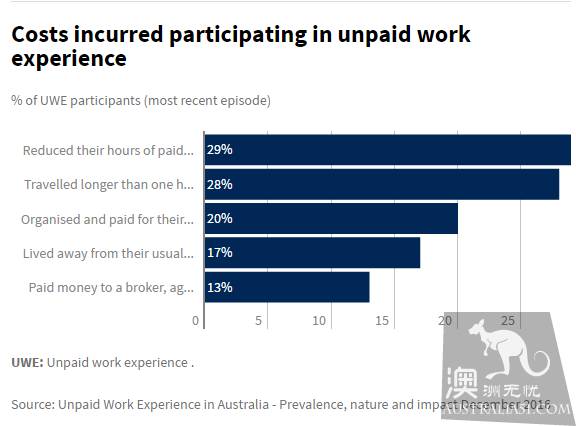"the workplace does not believe in tears"-this is the last year an official account the author out of the golden phrase, some people agree, some people scold, noise is extremely hot. Is free labor a loss? Of course not! Is it worth bearing? That's not necessarily the case.

In the face of the increasing prevalence of unpaid employment, an Australian agency commissioned by the Federal goverment Department for Employment conducted a survey of 3800 18-year-old 29-year-olds across the country. The results showed that 1 / 4 of them got official jobs. Some people feel that they have at least accumulated experience even though they have not stayed, but can free labour improve the chances of finding a job? Nobody knows! who knows!

The blonde, Frances Johns, is part of the free labor force. In order to get a formal job, she worked in Bella Portofino in February last year, working eight and a half hours every Sunday night, but according to her statement, Every job is to bring tea water, sweep the floor clean, the key is not to pay any salary, had known that, she would not waste time here.

In fact, situations like Frances Johns abound in the Australian workplace. The survey found that at least 58 percent of the 3800 young people had done unpaid work in the past five years, meaning that almost 1 / 3 of Australians between the ages of 18 and 64 had worked for no pay by the time they reached the age of 18 to 64.
According to Damian Oliver of the Sydney University of Science and Technology Business School, according to one of the researchers, there are many reasons for the high rate, mainly because students are keen to take part in internships so that they can become more competitive in the job market. And some degree curriculum requirements itself prescribe a certain amount of internship time. Of course, a handful of young people are mere bystanders who work to meet job requirements for youth allowances and social benefits.

The first three lines show that the proportion of students participating in free practice is 49% in the traditional sense, while the light blue bar is the other reason for choosing free work.
One is willing to beat and the other is willing to suffer. If we accept free employment, it means that we must bear the high cost of insurance, transportation, communications and so on. Therefore, the survey also tells us. Students from big cities are more willing to practice for free than those from small cities, and some poor students may not even be able to afford internships!
The following figure shows the costs of unpaid labor, which account for the bulk of the income from paid work abandoned as a result, long journeys over an hour, and out-of-pocket insurance.

This explains why high-end industries such as law, finance and journalism tend to be dominated by students with a better background, on the one hand, and the extensive social networking of their native families, on the one hand, while it is important, on the other hand, that their families have a wide range of social networks. Because rich people are more willing to spend money on their children's internship ah! Fall!
